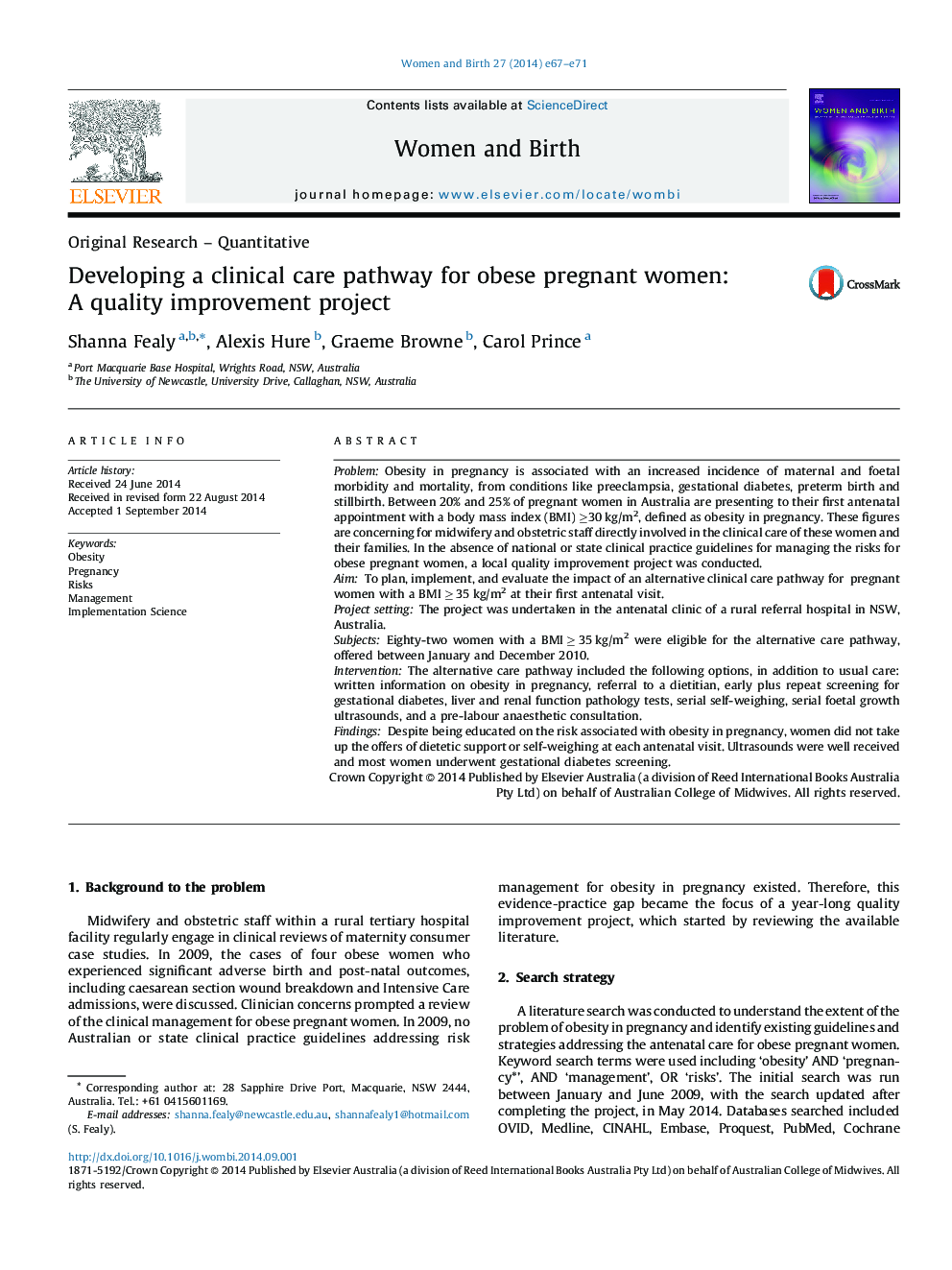| Article ID | Journal | Published Year | Pages | File Type |
|---|---|---|---|---|
| 2636013 | Women and Birth | 2014 | 5 Pages |
ProblemObesity in pregnancy is associated with an increased incidence of maternal and foetal morbidity and mortality, from conditions like preeclampsia, gestational diabetes, preterm birth and stillbirth. Between 20% and 25% of pregnant women in Australia are presenting to their first antenatal appointment with a body mass index (BMI) ≥30 kg/m2, defined as obesity in pregnancy. These figures are concerning for midwifery and obstetric staff directly involved in the clinical care of these women and their families. In the absence of national or state clinical practice guidelines for managing the risks for obese pregnant women, a local quality improvement project was conducted.AimTo plan, implement, and evaluate the impact of an alternative clinical care pathway for pregnant women with a BMI ≥ 35 kg/m2 at their first antenatal visit.Project settingThe project was undertaken in the antenatal clinic of a rural referral hospital in NSW, Australia.SubjectsEighty-two women with a BMI ≥ 35 kg/m2 were eligible for the alternative care pathway, offered between January and December 2010.InterventionThe alternative care pathway included the following options, in addition to usual care: written information on obesity in pregnancy, referral to a dietitian, early plus repeat screening for gestational diabetes, liver and renal function pathology tests, serial self-weighing, serial foetal growth ultrasounds, and a pre-labour anaesthetic consultation.FindingsDespite being educated on the risk associated with obesity in pregnancy, women did not take up the offers of dietetic support or self-weighing at each antenatal visit. Ultrasounds were well received and most women underwent gestational diabetes screening.
